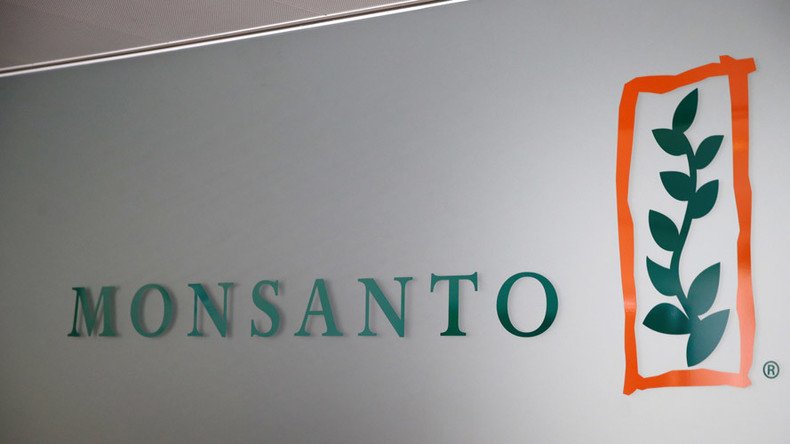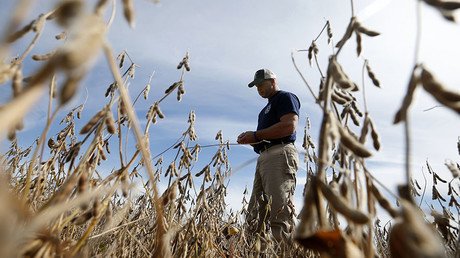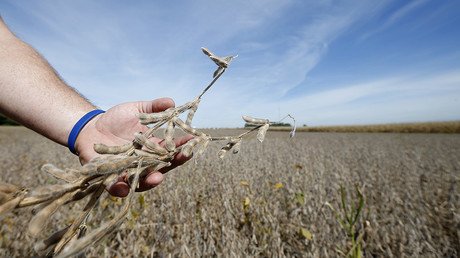Monsanto’s ‘less-volatile’ dicamba herbicide receives quiet EPA approval

The EPA has quietly approved the usage of Monsanto’s brand new herbicide, which the company says is less “volatile” than all alternative dicamba-based compounds that have caused massive crop damage, lawsuits and even bloodshed in the past.
The US Environmental Protection Agency approved the usage of the dicamba-based herbicide XtendiMax with VaporGrip Technology, on Wednesday, although the event went almost unnoticed by the media and activists, who have been otherwise preoccupied with the US Presidential elections' fallout.
The company still needs to get approval from individual states before the product can be sold to farmers, but according to Monsanto’s spokesman Kyel Richard, it should be in the market by the start of next growing season.
Breaking news: morning after the election, EPA rushes out decision that will massively increase use of toxic pesticide on GE crops #dicambahttps://t.co/GRkYqMSSka
— Lori Ann Burd (@LoriAnnBurd) 9 ноября 2016 г.
Dicamba is a decades-old herbicide, proven to be extremely volatile and drift-prone, vaporizing from treated fields and potentially affecting neighboring crops. Dicamba functions basically by increasing a plant’s growth rate to the point that it outgrows its nutrient capabilities and dies.
The weed killer has seen a surge in usage this year, since Monsanto’s new dicamba-resistant seeds entered the market before XtendiMax. Monsanto introduced Bollgard II XtendFlex cotton in 2015 and Roundup Ready 2 Xtend soybeans were introduced earlier this year.
Farmers had to use third-party older dicamba-based herbicides with Monsanto’s seeds, despite the company’s warnings. According to multiple reports, such activities caused a massive damage to off-target non-GM crops in at least ten states in America.
The affected crops included soybeans, tomatoes, cantaloupes, watermelons, rice, cotton, peas, peanuts, alfalfa and even peaches. Bill Bader, owner of Bader Peaches, Missouri's largest peach producer, estimated a loss of 30,000 trees.
“We need to go after Monsanto. These farmers are being hung out to dry,” said Bader.
Arguments over dicamba drifts between farmers even led to a shooting in Arizona, which left one farmer dead, according to local law enforcement.
Even with the approval of the brand new herbicide, some farmers affected by the drifts, said they would have to switch to Monsanto’s dicamba-resistant crops to protect themselves from possible incidents in the future, by way of insurance, St. Louis Dispatch reported. EPA launched a criminal investigation in October into the illegal application of drift-prone herbicides onto new plants. It’s uncertain, whether these measures will prevent dicamba-related crop damage in the future, since some farmers might continue using extremely volatile third-party herbicides.
Meanwhile, the notorious agrochemical giant fell under fire for releasing new GM crops into the market before their new, supposedly, “less-volatile” dicamba-based herbicide. Monsanto officials said that the farmers themselves asked the company to release the new seeds, believing it would boost production.
“We chose to launch this year to allow growers to experience the industry-leading varieties of Roundup Ready 2 Xtend soybeans,” company spokesman Dan Urnikis told Delta Farm Press. “They can plant with confidence this year in anticipation of the chemical approval for the 2017 growing season.”
The farmers and their unwitting neighbors have certainly “experienced” the effect of premature release of Monsanto’s new GM seeds. And since Monsanto’s “best products [continued] to sit on the shelf,” it’s the farmers to blame for usage of “illegal” chemicals.
Monsanto’s claims of the new product being “less-volatile” appeared even more suspicious after EPA published a list of the very specific and strict rules of how to apply XtendiMax. To mitigate the possibility of drift, the new brand cannot be applied from aircraft or when wind speed is over 15 mph (6.7 m/s).
“Buffer zones to protect sensitive areas when the wind is blowing toward them” must be observed, as well as some very specific Monsanto-manufactured nozzles must be used.
“If done correctly, this is all a terrific tool for farmers to fight glyphosate-tolerant weeds,” Tamara Nelsen, Illinois Farm Bureau (IFB) senior director of commodities, said.
Some scientists believe however, that this “terrific tool” does not battle the most terrifying problem – superweeds. Basically, XtendiMax can kill weeds, resistant to Monsanto’s other famous product Roundup, while overuse and misuse of herbicides create new superweeds. Besides that, dicamba is not a new chemical, and the first plants resistant to is were discovered in early 1990s.
“We can’t spray our way out of this problem. We need to get off the pesticide treadmill,” said Nathan Donley, a senior scientist for the Center for Biological Diversity, in a prepared statement. “Pesticide resistant superweeds are a serious threat to our farmers, and piling on more pesticides will just result in superweeds resistant to more pesticides. We can’t fight evolution – it’s a losing strategy.”














